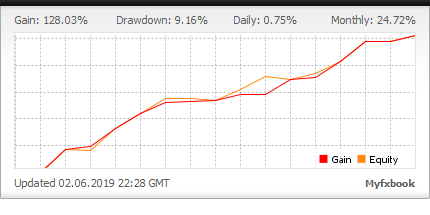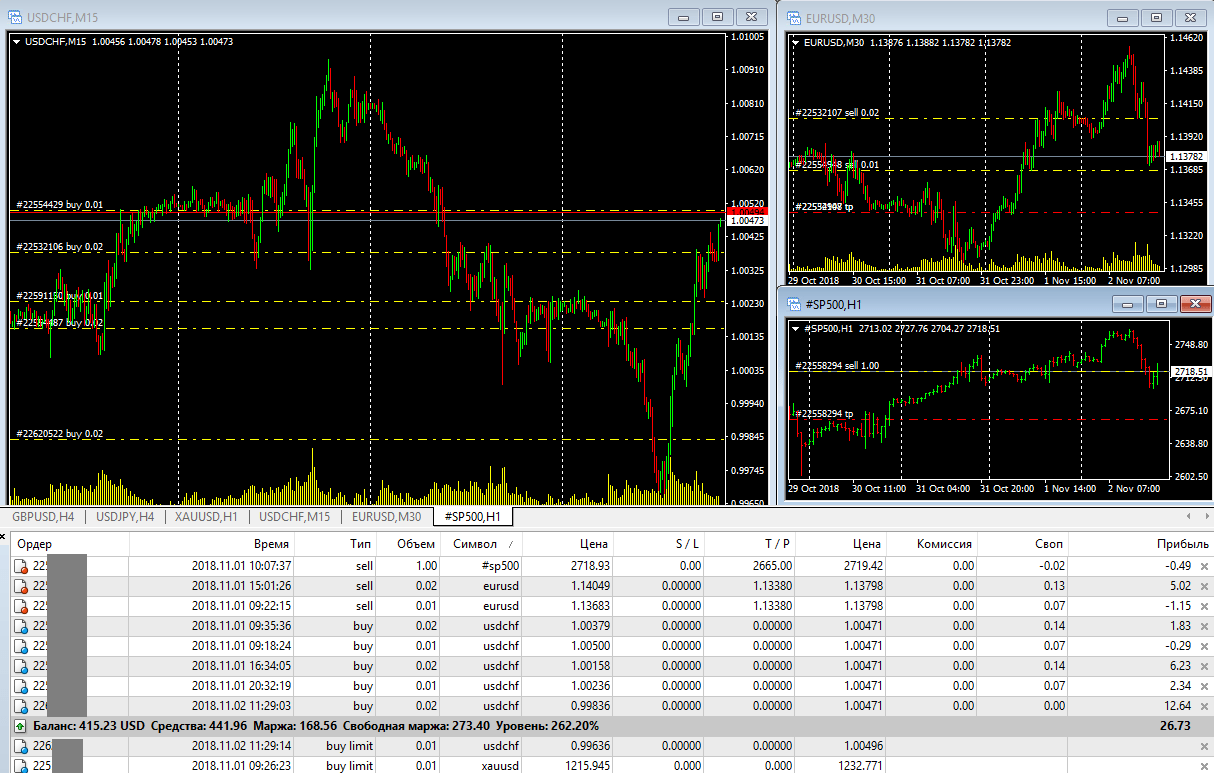Trading Strategies Based on WallStreetTrader Pro
Quote from Max Brinn on April 2, 2018, 10:44 amHey guys, let's discuss the basic WST Pro based trading strategy.
So I trade short-term and I have been able to trade with profit for a long time. I use MetaTrader indicator WallStreetTrader. I also use fundamental and technical analysis for trading, but the basis of the strategy is the analysis of trading volumes.
About WallStreetTrader Pro
The data is available on the system’s website for free, or you can conveniently receive it directly into the platform. It's paid, but if you need an indicator to get data in a convenient way, then it's better to pay for a subscription, it's inexpensive.
In short, the indicator shows the injections of large players into the market, and these guys always protect their positions, so when the price returns to their entry level, you can open a rebound trade.
Useful WallStreetTrader Links
You can download the indicator from this page.
The Essence of the Trading Strategy
In short, you need to look at where the movement came from with an increased volume, and when the price returns to this beginning, enter a rebound trade. It is assumed that a major player will defend this level.
Example.
When we rise on volume and fall lightly, then there will always be an increase, because. a major player, if entered the market, will defend his position.
And if we grew on the volume, and we fall on the volume, then we already have to consider what the big man is up to. We skip such patterns
Well, let's look at the analysis on the example of a currency pair GBPUSD (of British Pound CME futures). There was a post in Twitter with such forecast. It was February 11, 2022.
Why did the British pound have to decline against the dollar? Take a look at the chart:
If we look at the first three days with volumes at the very beginning of the chart, we will see that major players entered the market, after which the price stopped and even fell.
Hedge funds usually do not enter the market in one day, if the volume is single, then most likely it is an additional set. And if so, then the price has the right to return to the main entry point, where they have a trade open. Against her, they will no longer let the price at a loss.
In this case, we see that a major player enters the sale. And this means that when the price returns up, we should also sell, which we did.
After that, the price went down, and soon a major player began to enter the market again. All volumes appeared on the fall of the market, so it was not worth closing the deal.
Then there was a flat during which new volumes appeared. If you are having difficulty understanding where the volumes of a major player are headed, you can look at intraday volumes using the VSA method.
So turn on a timeframe like 15 minutes. And turn on the trading session separators to see how the trading volume of large players was distributed by day. Let me remind you that on the chart itself we see the trading volume on futures. And the red volumes below are the volumes of the big players displayed in WST Pro.
What do we see here? The main bursts of intraday volumes were at those moments when the price bounced from top to bottom.
When we see small purchases within a downtrend, this will tell us about a pullback. However, if there are a lot of purchases and they are large, then the position can be closed by fixing the profit.
So..
You need to understand the logic of how funds work, then everything will become clear.
For example, you bought 10 lots at a price of $10. The price goes up to $20 and you want to get out at $100. You buy 10 more lots for $20. Now, if the price falls a little, you are not afraid, but you will not allow it to fall much already in order to be at a loss. Therefore, when the price returns to $ 10-15, you will buy all sales on the market
That's the hedge fund mindset.
And the trader's thinking is here - if you can see that the price was growing from 10 to 20 dollars and there were volumes of hedge funds, then they were buying. And if suddenly the price drops after that, then we need to buy, because hedge funds are in the market and the price will not be allowed to go down much.
Hey guys, let's discuss the basic WST Pro based trading strategy.
So I trade short-term and I have been able to trade with profit for a long time. I use MetaTrader indicator WallStreetTrader. I also use fundamental and technical analysis for trading, but the basis of the strategy is the analysis of trading volumes.
About WallStreetTrader Pro
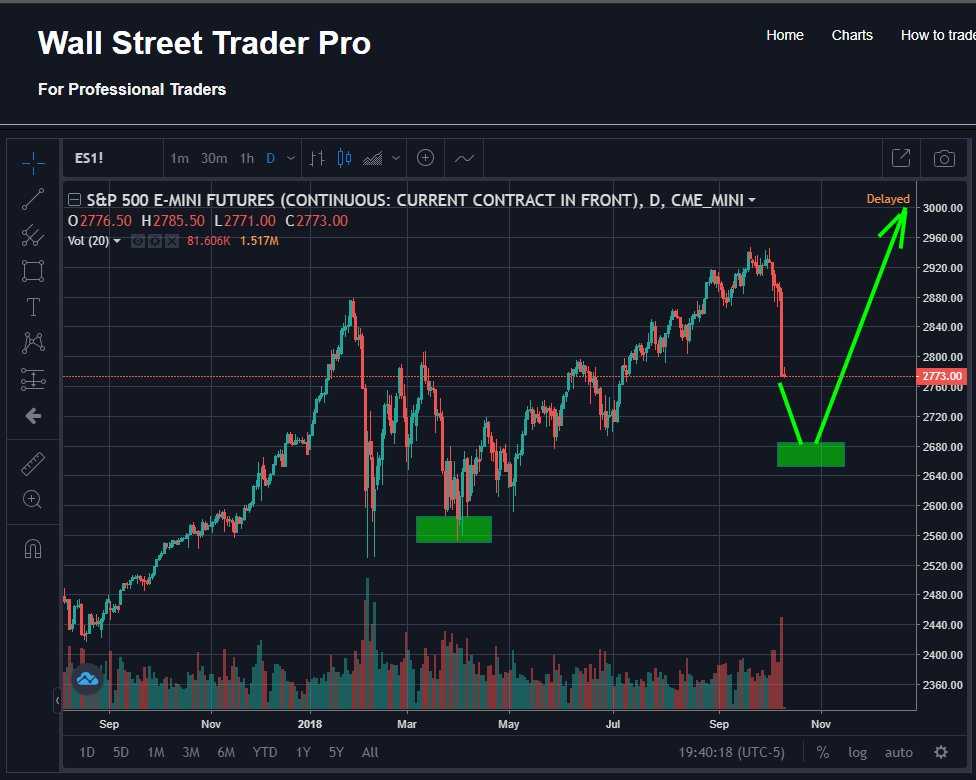
The data is available on the system’s website for free, or you can conveniently receive it directly into the platform. It's paid, but if you need an indicator to get data in a convenient way, then it's better to pay for a subscription, it's inexpensive.
In short, the indicator shows the injections of large players into the market, and these guys always protect their positions, so when the price returns to their entry level, you can open a rebound trade.
Useful WallStreetTrader Links
You can download the indicator from this page.
The Essence of the Trading Strategy
In short, you need to look at where the movement came from with an increased volume, and when the price returns to this beginning, enter a rebound trade. It is assumed that a major player will defend this level.
Example.
When we rise on volume and fall lightly, then there will always be an increase, because. a major player, if entered the market, will defend his position.
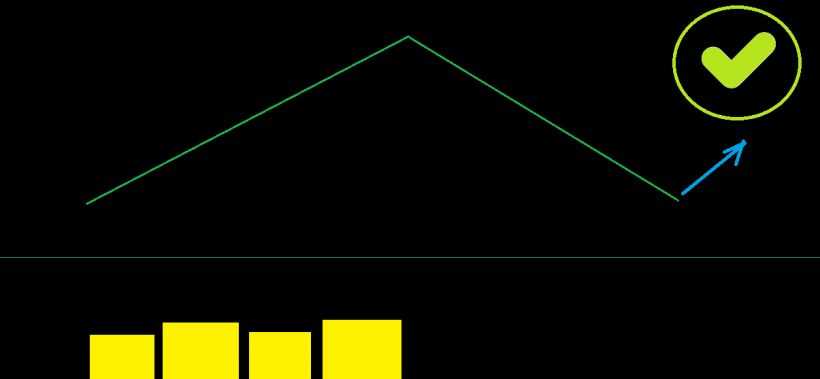
And if we grew on the volume, and we fall on the volume, then we already have to consider what the big man is up to. We skip such patterns
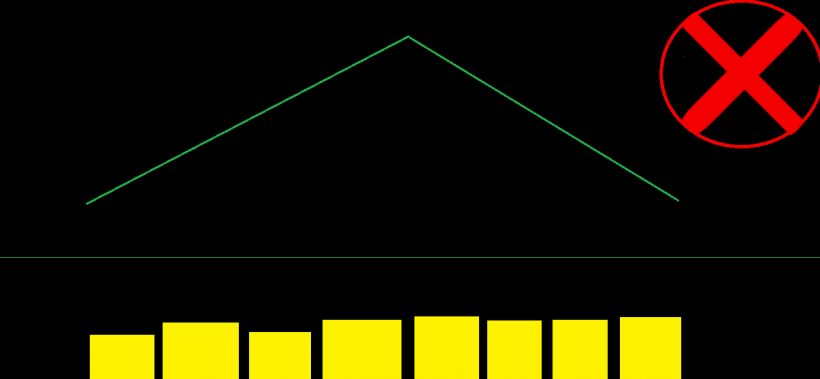
Well, let's look at the analysis on the example of a currency pair GBPUSD (of British Pound CME futures). There was a post in Twitter with such forecast. It was February 11, 2022.
Why did the British pound have to decline against the dollar? Take a look at the chart:
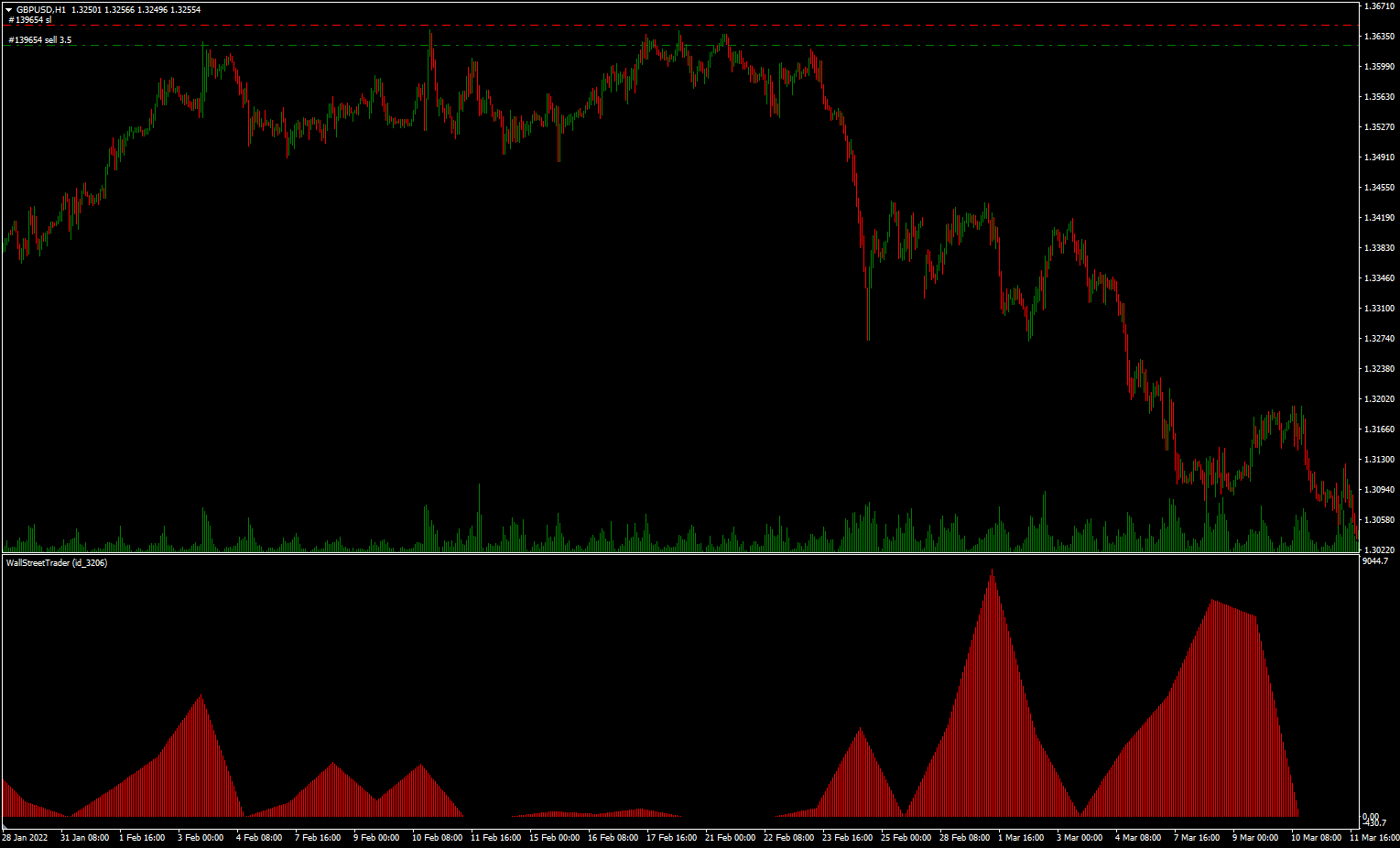
If we look at the first three days with volumes at the very beginning of the chart, we will see that major players entered the market, after which the price stopped and even fell.
Hedge funds usually do not enter the market in one day, if the volume is single, then most likely it is an additional set. And if so, then the price has the right to return to the main entry point, where they have a trade open. Against her, they will no longer let the price at a loss.
In this case, we see that a major player enters the sale. And this means that when the price returns up, we should also sell, which we did.
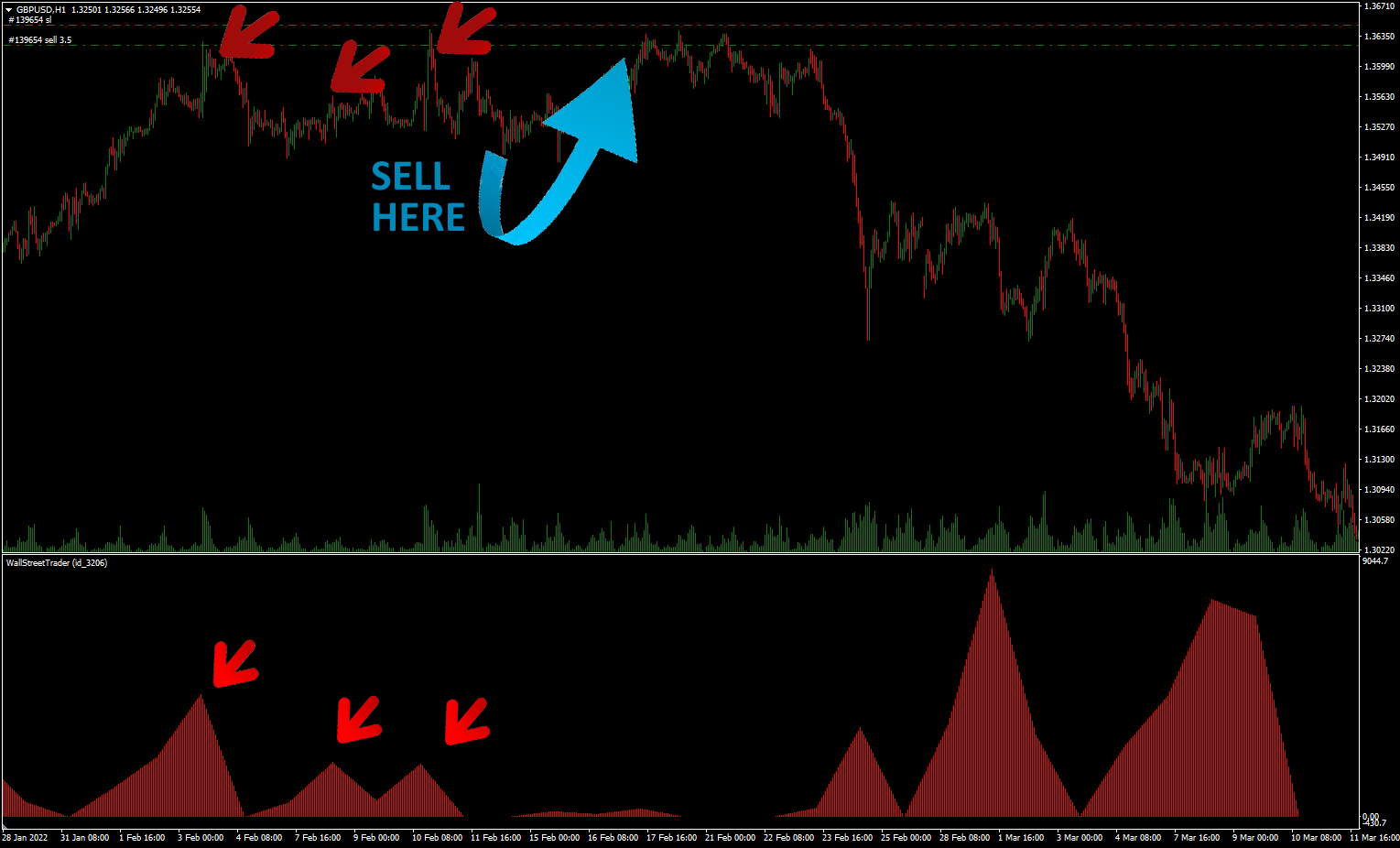
After that, the price went down, and soon a major player began to enter the market again. All volumes appeared on the fall of the market, so it was not worth closing the deal.
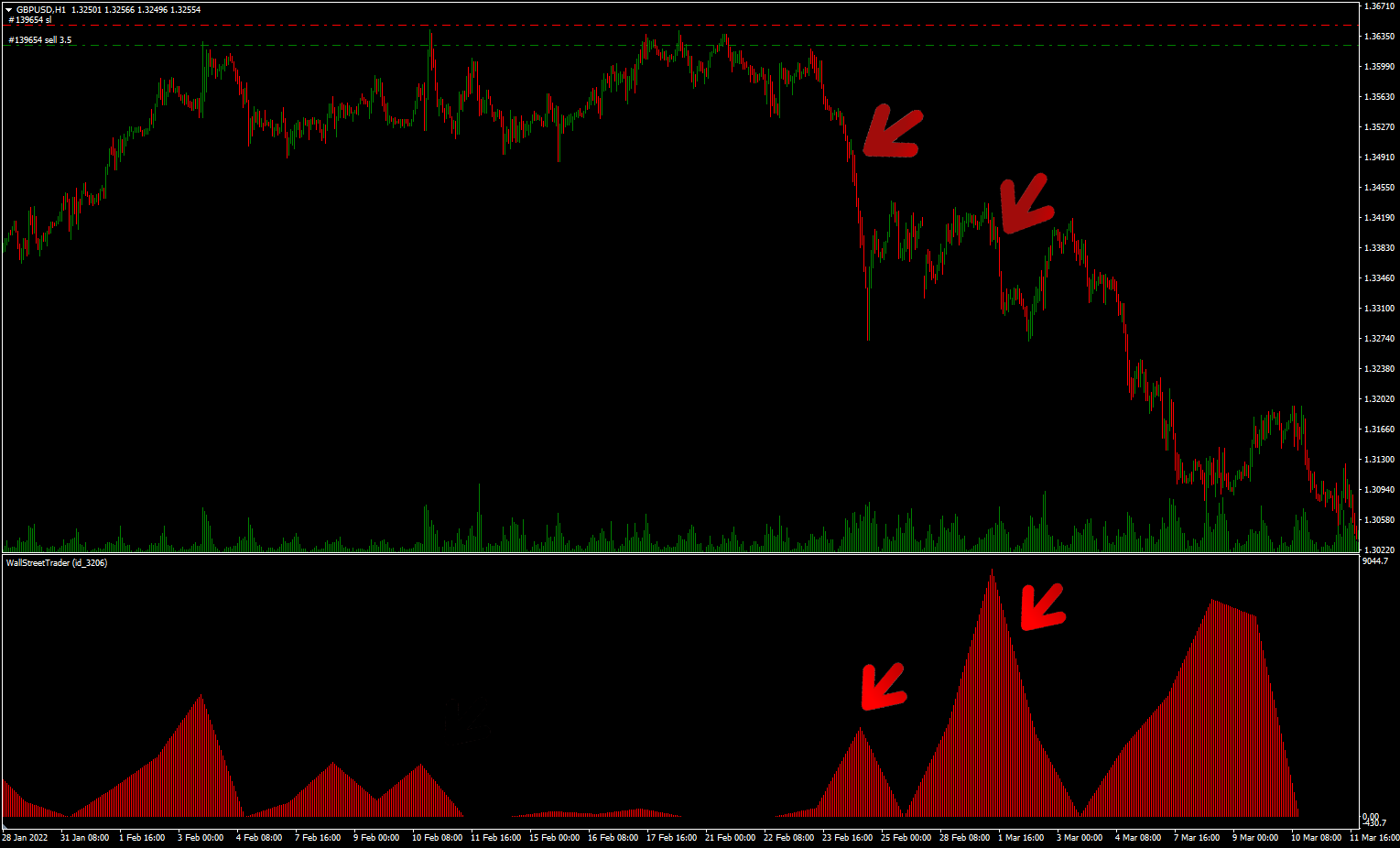
Then there was a flat during which new volumes appeared. If you are having difficulty understanding where the volumes of a major player are headed, you can look at intraday volumes using the VSA method.
So turn on a timeframe like 15 minutes. And turn on the trading session separators to see how the trading volume of large players was distributed by day. Let me remind you that on the chart itself we see the trading volume on futures. And the red volumes below are the volumes of the big players displayed in WST Pro.
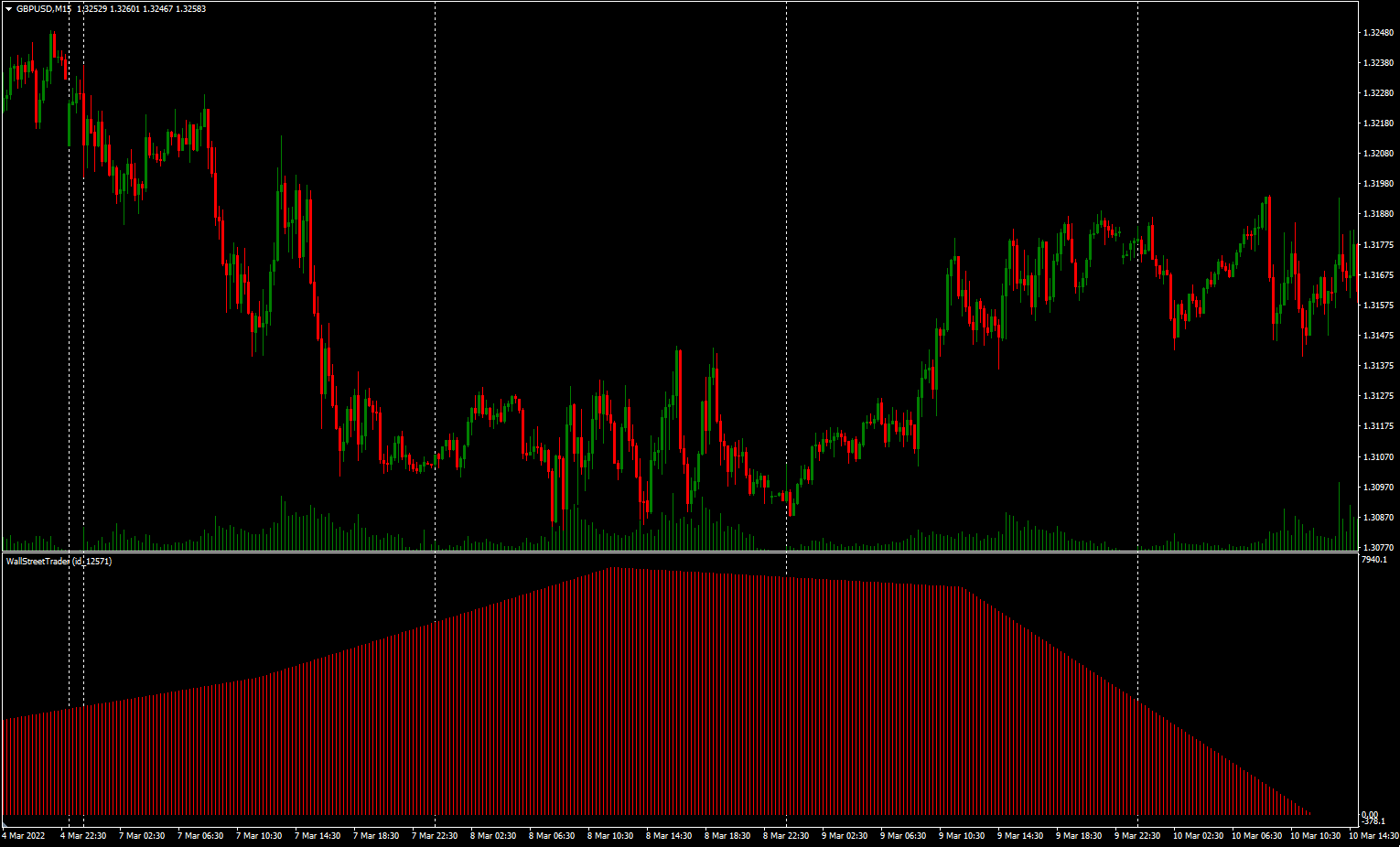
What do we see here? The main bursts of intraday volumes were at those moments when the price bounced from top to bottom.
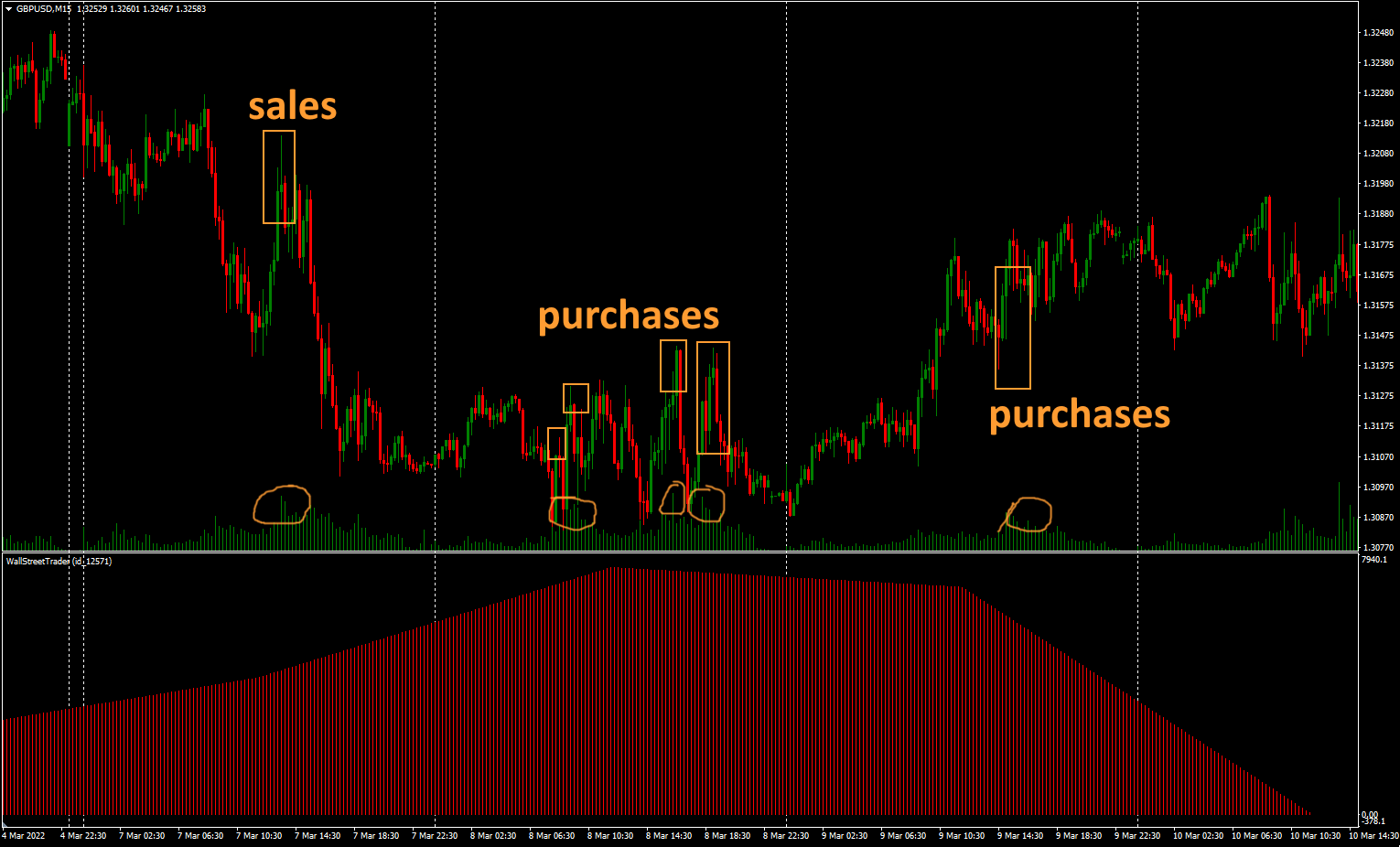
When we see small purchases within a downtrend, this will tell us about a pullback. However, if there are a lot of purchases and they are large, then the position can be closed by fixing the profit.
So..
You need to understand the logic of how funds work, then everything will become clear.
For example, you bought 10 lots at a price of $10. The price goes up to $20 and you want to get out at $100. You buy 10 more lots for $20. Now, if the price falls a little, you are not afraid, but you will not allow it to fall much already in order to be at a loss. Therefore, when the price returns to $ 10-15, you will buy all sales on the market
That's the hedge fund mindset.
And the trader's thinking is here - if you can see that the price was growing from 10 to 20 dollars and there were volumes of hedge funds, then they were buying. And if suddenly the price drops after that, then we need to buy, because hedge funds are in the market and the price will not be allowed to go down much.
Quote from jimmy on June 8, 2018, 6:45 pmHow do you define price levels where to enter the position? The indicator shows only the day volume and then you need to determine the level.
How do you define price levels where to enter the position? The indicator shows only the day volume and then you need to determine the level.
Quote from Max Brinn on June 9, 2018, 12:11 pmThis is usually seen in intraday trading volumes. Turn on the display of the timeframe M15-M30 and you will see at what levels the infusions were. Another good way to see price levels is to use a cluster delta.
Secondly, it is better to enter several orders at once, learn to trade like hedge funds, copy their behavior. They do not enter the market with one transaction.
And thirdly, there are terminals with levels of maximum horizontal volumes (Volume Profile).
This is usually seen in intraday trading volumes. Turn on the display of the timeframe M15-M30 and you will see at what levels the infusions were. Another good way to see price levels is to use a cluster delta.
Secondly, it is better to enter several orders at once, learn to trade like hedge funds, copy their behavior. They do not enter the market with one transaction.
And thirdly, there are terminals with levels of maximum horizontal volumes (Volume Profile).
Quote from pivottrader on July 11, 2018, 10:52 pmIs this a long term system? Hedge fund volumes are rare when you look closely.
Is this a long term system? Hedge fund volumes are rare when you look closely.
Quote from Max Brinn on July 12, 2018, 9:12 amDefinitely. This is big money, they most often enter at the beginning of the contract and then only adjust the position. Either it happens before important economic events that they charge their poses, or it is on the days of news that they enter the market when there is a lot of liquidity on the market.
Definitely. This is big money, they most often enter at the beginning of the contract and then only adjust the position. Either it happens before important economic events that they charge their poses, or it is on the days of news that they enter the market when there is a lot of liquidity on the market.
Quote from Gorilla on November 1, 2018, 12:21 pmI see the market according to this concept: the price in the market can be arbitrarily the same, if the state of the economy does not change more or less. For example, oil costs $100 per barrel. Buyers buy, manufacturers sell. Why is the price like this? Because somehow there is a balance between supply and demand.
However, there are speculators in the market. Those who buy oil in order to sell it before delivery. There are also hedge funds that are essentially big speculators. There are dealers. There are market makers. And it is precisely because of these categories of people that the price changes. If speculators buy a lot of oil, then it makes sense for a major player to push the price down and collect speculators' money.
There is a currency market, where the price reflects, albeit belatedly, but the approximate demand for currencies. If someone needs a lot of one currency, then buying it from the market in large quantities, supply and demand will change. This is the same as in oil, but there the productivity of goods changes more slowly than the demand for currency in certain countries changes. But otherwise, everything is identical.
So, if we find places on the chart where a lot of small fish gather in a bunch, which believe in one religion (trend direction), then it is obvious that a large fish will eat all this trifle. It does not matter how she eats it - slowly rocking the boat up and down a little, so as not to scare speculators and cause them to exit the market prematurely, or vice versa, a lightning-fast sideways move to collect people's margins as soon as possible. It all depends on what the big fish sees in the order book level2.
I do this with the wallstreettrader pro platform and VSA analysis. And I also use the base of technical analysis in order to find the best entry levels.
Many do not like SOT, because. they are late. This is true and therefore WST + VSA is sufficient for most cases. But if the trend is being prepared for six months or a year in advance, then SOT will help to establish the correctness of the chosen direction. It will also help to determine in advance in long trends when a large fish is eating up the last fish.
Technical analysis is needed in order to find the best entry points. If I understand that a major player has bought a dollar, then in order to enter a sell on the eurodollar, I'd better look for some significant level near the sales of coarse, to enter from it.
I see the market according to this concept: the price in the market can be arbitrarily the same, if the state of the economy does not change more or less. For example, oil costs $100 per barrel. Buyers buy, manufacturers sell. Why is the price like this? Because somehow there is a balance between supply and demand.
However, there are speculators in the market. Those who buy oil in order to sell it before delivery. There are also hedge funds that are essentially big speculators. There are dealers. There are market makers. And it is precisely because of these categories of people that the price changes. If speculators buy a lot of oil, then it makes sense for a major player to push the price down and collect speculators' money.
There is a currency market, where the price reflects, albeit belatedly, but the approximate demand for currencies. If someone needs a lot of one currency, then buying it from the market in large quantities, supply and demand will change. This is the same as in oil, but there the productivity of goods changes more slowly than the demand for currency in certain countries changes. But otherwise, everything is identical.
So, if we find places on the chart where a lot of small fish gather in a bunch, which believe in one religion (trend direction), then it is obvious that a large fish will eat all this trifle. It does not matter how she eats it - slowly rocking the boat up and down a little, so as not to scare speculators and cause them to exit the market prematurely, or vice versa, a lightning-fast sideways move to collect people's margins as soon as possible. It all depends on what the big fish sees in the order book level2.
I do this with the wallstreettrader pro platform and VSA analysis. And I also use the base of technical analysis in order to find the best entry levels.
Many do not like SOT, because. they are late. This is true and therefore WST + VSA is sufficient for most cases. But if the trend is being prepared for six months or a year in advance, then SOT will help to establish the correctness of the chosen direction. It will also help to determine in advance in long trends when a large fish is eating up the last fish.
Technical analysis is needed in order to find the best entry points. If I understand that a major player has bought a dollar, then in order to enter a sell on the eurodollar, I'd better look for some significant level near the sales of coarse, to enter from it.
Quote from Gorilla on November 1, 2018, 12:55 pmOn a new futures contract, hedge funds sell euros to dealers. Eurodollar dealers are primordially bred for money, and it will probably be the same now.
According to WallStreetTrader we have a lot of Eurodollar trades in a down market, especially on the 24th where the groats are at the core of their position.
If we talk about technical analysis, then we are approaching a significant level of support, which, apparently, will be broken (but we will monitor the trades of the big ones).
I was late with the sale, so I will sell in case of a return to the levels of 15000 and beyond. This can happen if, for example, when reaching the lower limit of support, someone finds the strength to ensure that the euro temporarily bounces up.
If the support level is broken quickly enough, then I will sell from a rebound if the price returns to it, before the final collapse, which is now observed in the Swiss franc, for example.
On a new futures contract, hedge funds sell euros to dealers. Eurodollar dealers are primordially bred for money, and it will probably be the same now.
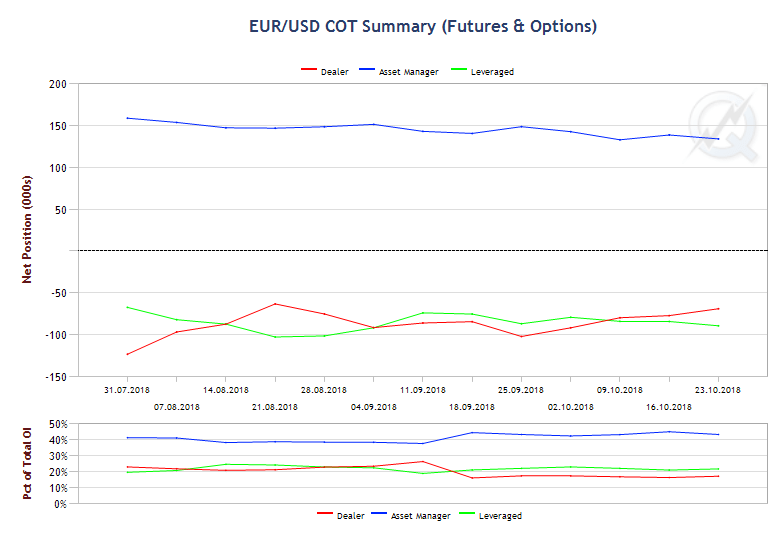
According to WallStreetTrader we have a lot of Eurodollar trades in a down market, especially on the 24th where the groats are at the core of their position.
If we talk about technical analysis, then we are approaching a significant level of support, which, apparently, will be broken (but we will monitor the trades of the big ones).
I was late with the sale, so I will sell in case of a return to the levels of 15000 and beyond. This can happen if, for example, when reaching the lower limit of support, someone finds the strength to ensure that the euro temporarily bounces up.
If the support level is broken quickly enough, then I will sell from a rebound if the price returns to it, before the final collapse, which is now observed in the Swiss franc, for example.
Quote from Gorilla on November 1, 2018, 1:40 pmHedge funds buy gold. And yesterday they bought gold again.
I didn’t have time to buy with them, so I bought a little on the market. If we return to the place of purchases and the speculators still remain like living meat, then I will enter even lower.
And here is an interesting situation for the franc. Big fish have taken a big position on the dollar and are eager to collapse the franc:
Dealers buy and dealers will suffer.
I don't take screenshots from wallstreettrader pro. I don’t particularly bother with technical analysis yet, since I don’t have much time for trading, and in the end, for a position trader, levels are less important than understanding the direction.
Hedge funds buy gold. And yesterday they bought gold again.
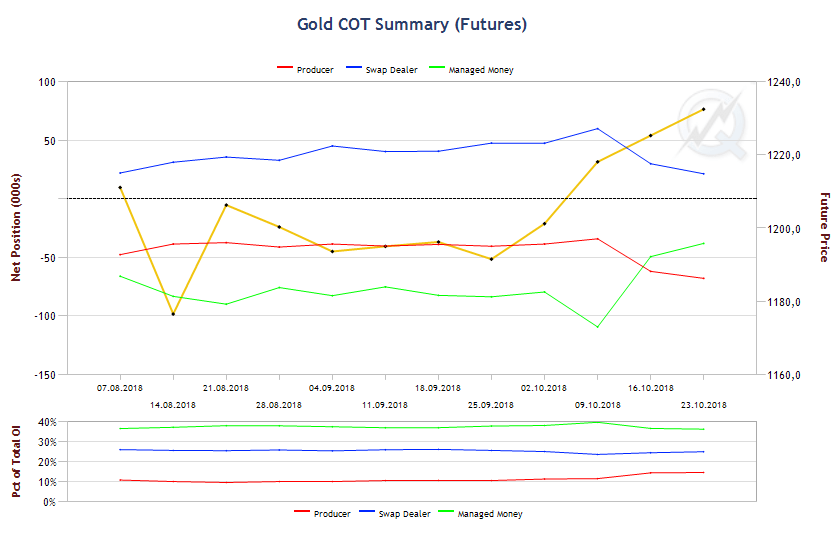
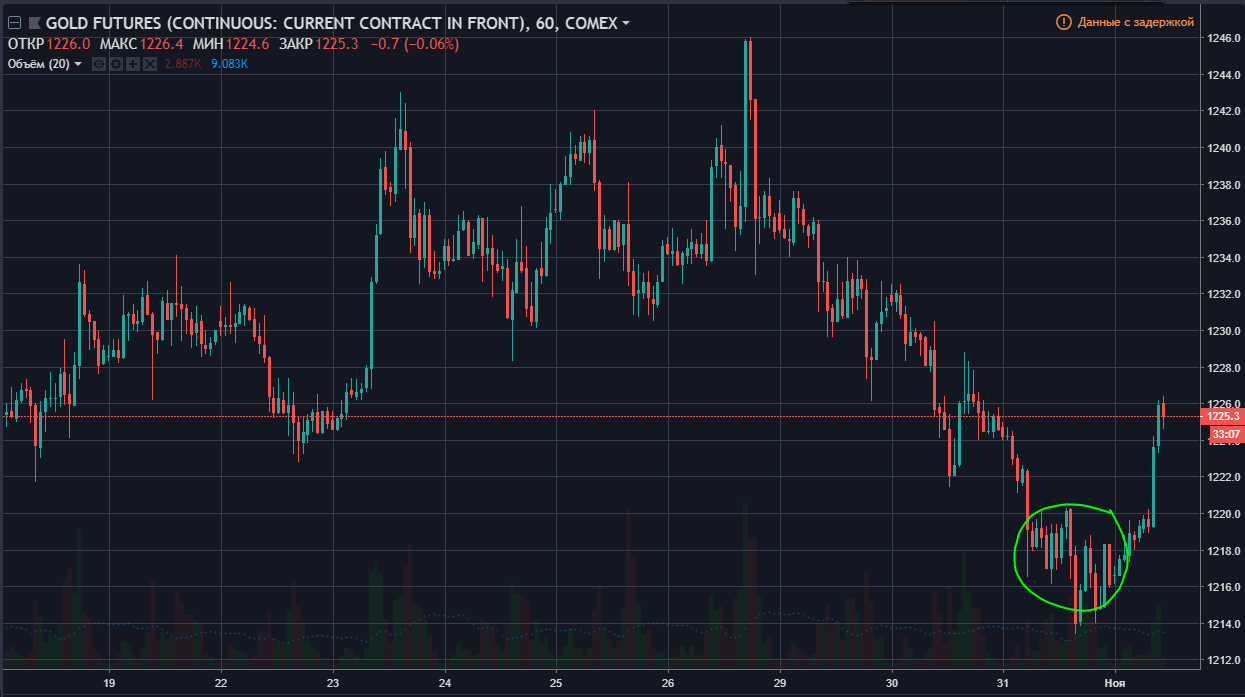
I didn’t have time to buy with them, so I bought a little on the market. If we return to the place of purchases and the speculators still remain like living meat, then I will enter even lower.
And here is an interesting situation for the franc. Big fish have taken a big position on the dollar and are eager to collapse the franc:
Dealers buy and dealers will suffer.
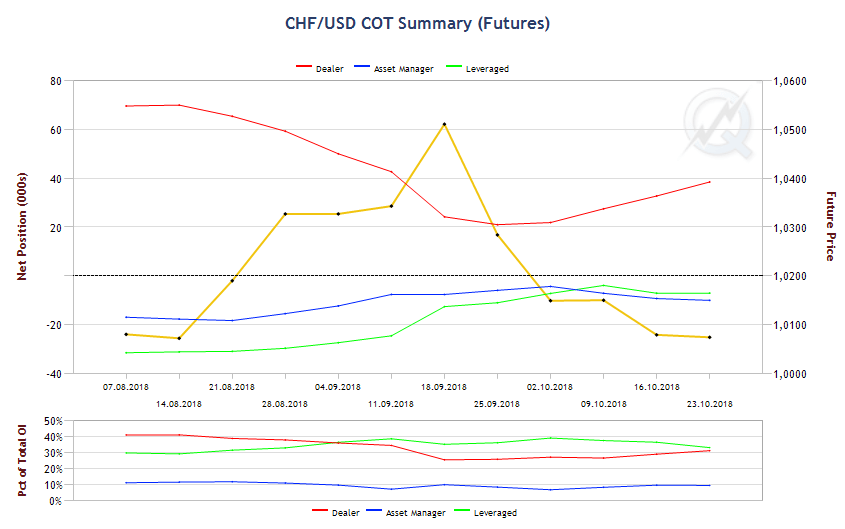
I don't take screenshots from wallstreettrader pro. I don’t particularly bother with technical analysis yet, since I don’t have much time for trading, and in the end, for a position trader, levels are less important than understanding the direction.
Quote from Gorilla on November 1, 2018, 4:30 pmHere are my total orders:
The initial deposit is 20,000 rubles. by the current moment there is some profit already from the beginning of trading. So from November it can be considered as an initial deposit of $400. I will post screenshots from the account all the time.
For the yen, it has not yet been possible to lure the little ones in the net. Other currencies have not yet analyzed.
Here are my total orders:
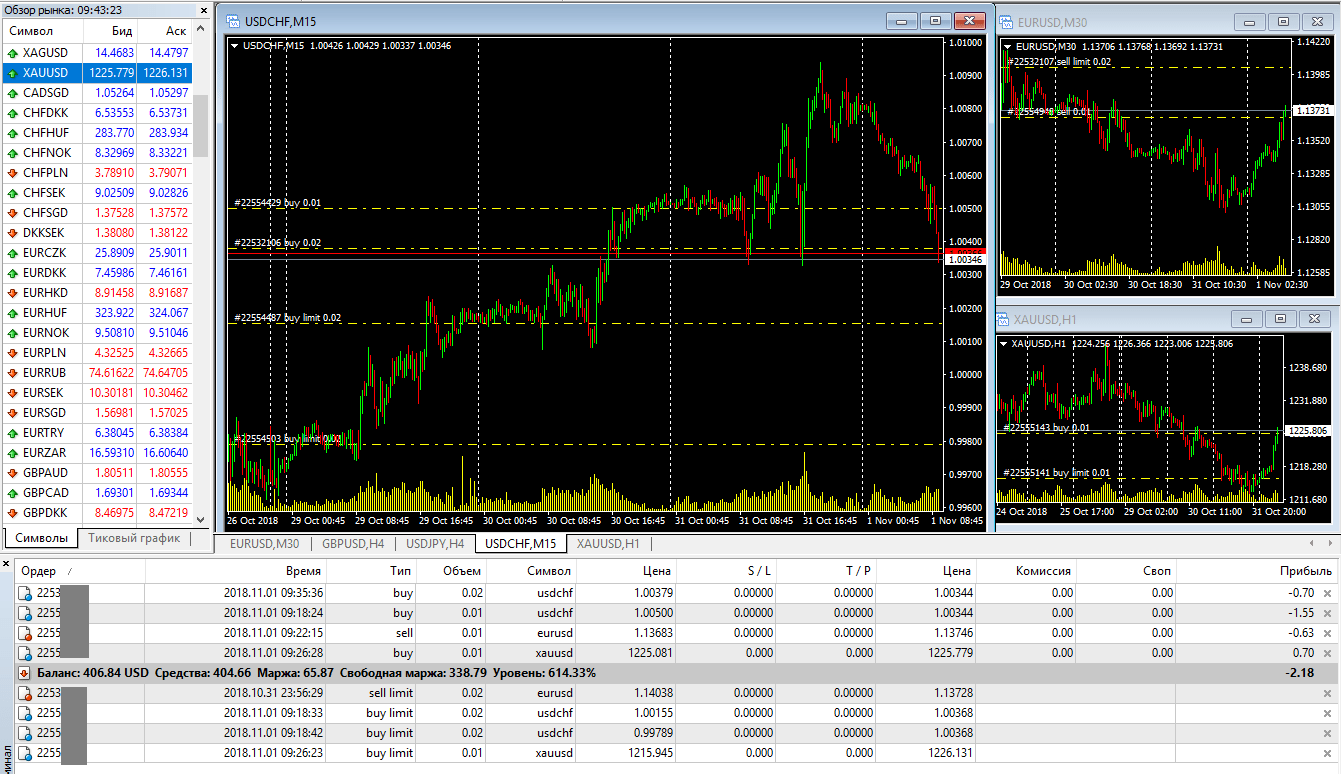
The initial deposit is 20,000 rubles. by the current moment there is some profit already from the beginning of trading. So from November it can be considered as an initial deposit of $400. I will post screenshots from the account all the time.
For the yen, it has not yet been possible to lure the little ones in the net. Other currencies have not yet analyzed.
Quote from Gorilla on November 1, 2018, 6:00 pmAccording to sp500, everything is clearly visible that the position is being taken short (there are many positions on wallstreettrader.pro and the chart is constantly falling), so you can get into the sale, which I did.
According to sp500, everything is clearly visible that the position is being taken short (there are many positions on wallstreettrader.pro and the chart is constantly falling), so you can get into the sale, which I did.
Quote from Gorilla on November 9, 2018, 3:52 pmCurrencies are falling, as I expected. Sp500 nevertheless stands still, so I fixed the profit in currencies, and added free funds to the sale of sp500.
Unfortunately, on my account it will not be possible to open a deal of the required small size according to MoneyManagement-y.That's why the drawdown is so big.
Currencies are falling, as I expected. Sp500 nevertheless stands still, so I fixed the profit in currencies, and added free funds to the sale of sp500.
Unfortunately, on my account it will not be possible to open a deal of the required small size according to MoneyManagement-y.That's why the drawdown is so big.
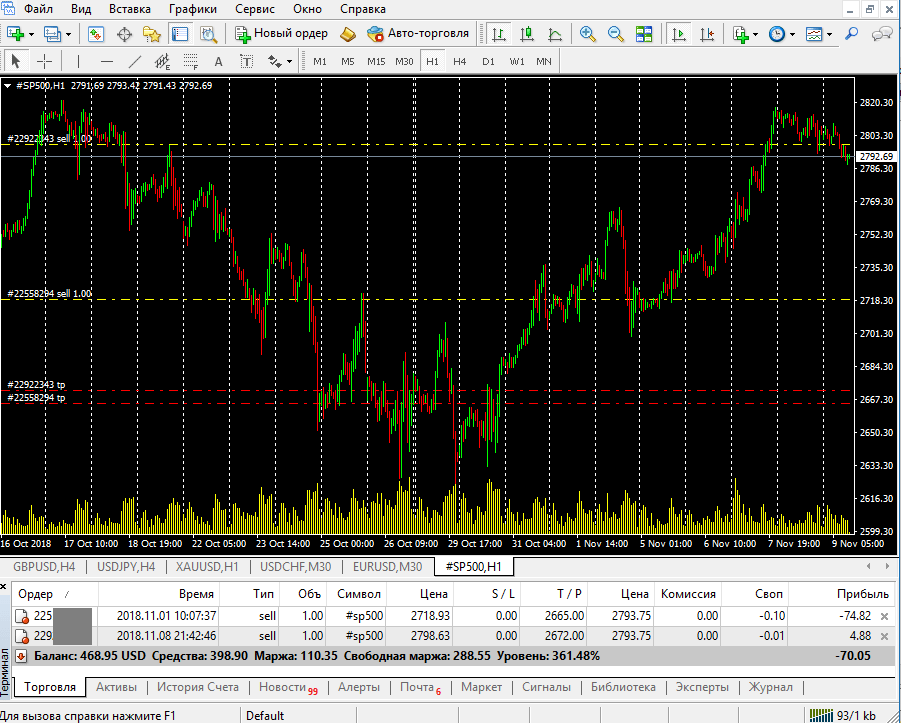
Quote from Gorilla on December 20, 2018, 3:36 pmI recently closed my private trading account, and I plan to open a RAMM by 2019.
I started with 20,000 rubles and in exactly 2 months I increased it to 50,000 rubles to show the work of my trading strategy.
The essence of my strategy is VSA based on the WallStreetTrader Pro database and COT.
Here is a report from my broker:
The last decrease in equity is the withdrawal of funds.
Statement before withdrawal:
I recently closed my private trading account, and I plan to open a RAMM by 2019.
I started with 20,000 rubles and in exactly 2 months I increased it to 50,000 rubles to show the work of my trading strategy.
The essence of my strategy is VSA based on the WallStreetTrader Pro database and COT.
Here is a report from my broker:
The last decrease in equity is the withdrawal of funds.
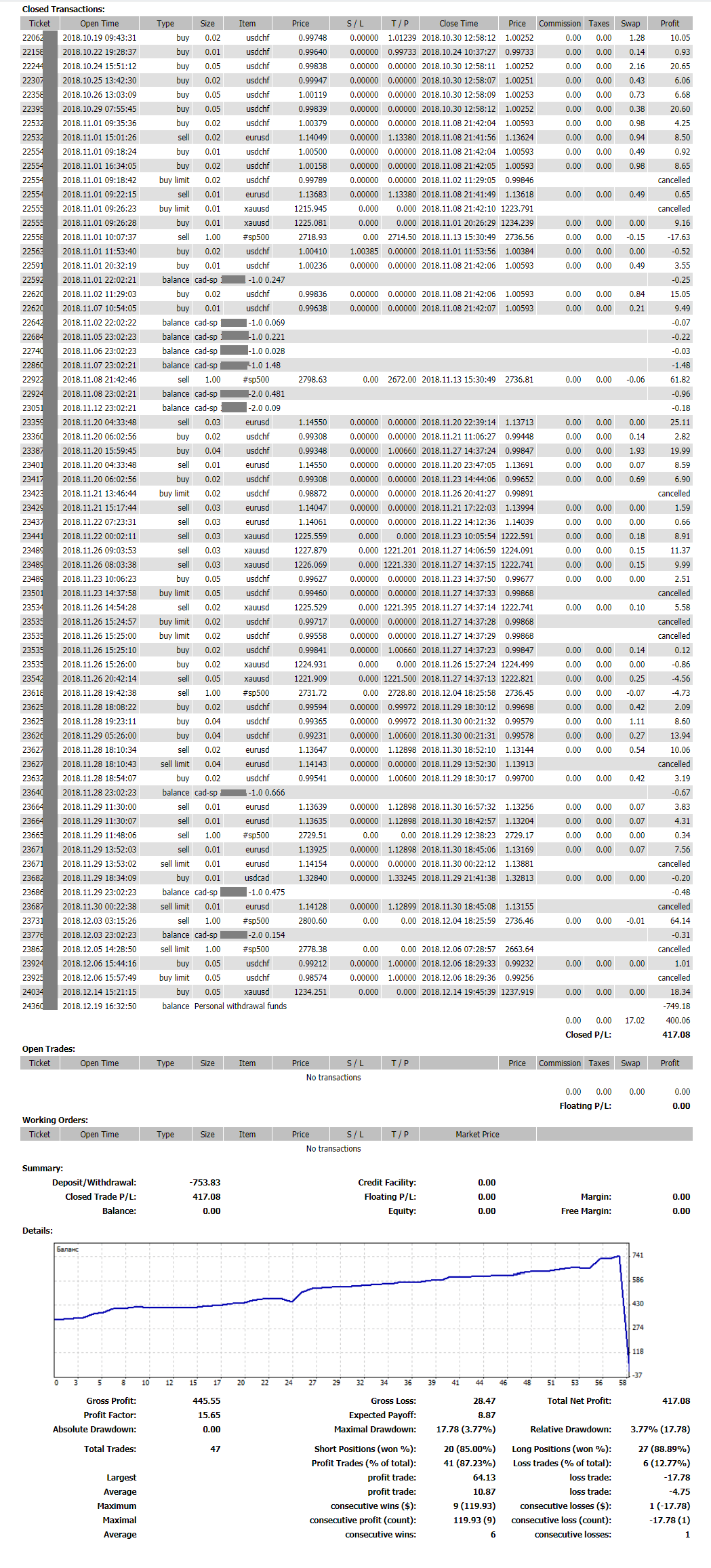
Statement before withdrawal:

Quote from Gorilla on January 25, 2019, 12:44 amI am opening up RAMM accounts to allow investors to join my trading. PM me if you want to join.
You can also ask here any questions regarding my trading. In other forums, I do not plan to maintain communication on my investment accounts, so as not to scatter attention.
The strategy on all accounts will be the same, and transactions. Accounts are opened in different companies for the convenience of investors (because someone has funds from one broker, someone from another).
I mainly trade in the futures markets, but it is difficult to show statistics there, and there I work with accounts of at least $ 5,000, so for the rest I will make accounts with FOREX companies.
Gorilla: Swissquote
An account that was opened to show trading strategy on a live account. I started with 20,000 rubles and in exactly 2 months I increased it to 50,000 rubles to show the work of my trading strategy.
I am opening up RAMM accounts to allow investors to join my trading. PM me if you want to join.
You can also ask here any questions regarding my trading. In other forums, I do not plan to maintain communication on my investment accounts, so as not to scatter attention.
The strategy on all accounts will be the same, and transactions. Accounts are opened in different companies for the convenience of investors (because someone has funds from one broker, someone from another).
I mainly trade in the futures markets, but it is difficult to show statistics there, and there I work with accounts of at least $ 5,000, so for the rest I will make accounts with FOREX companies.
Gorilla: Swissquote
An account that was opened to show trading strategy on a live account. I started with 20,000 rubles and in exactly 2 months I increased it to 50,000 rubles to show the work of my trading strategy.
